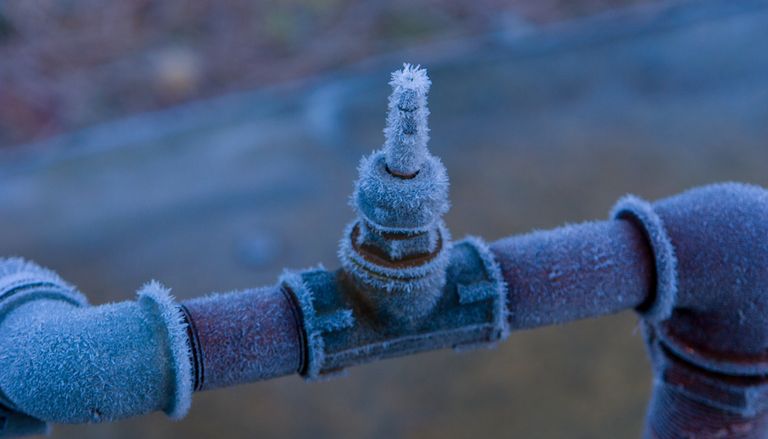Avoiding Frozen Pipes: Effective Strategies for Winter
Avoiding Frozen Pipes: Effective Strategies for Winter
Blog Article
Do you find yourself hunting for advise about 6 Ways to Prevent Frozen Pipes?

Cold weather can damage your pipes, particularly by freezing pipes. Right here's exactly how to stop it from taking place and what to do if it does.
Intro
As temperature levels decrease, the threat of frozen pipes increases, possibly bring about expensive repair work and water damage. Recognizing how to avoid icy pipes is critical for property owners in cold environments.
Prevention Tips
Protecting susceptible pipelines
Wrap pipelines in insulation sleeves or make use of warmth tape to safeguard them from freezing temperatures. Concentrate on pipelines in unheated or exterior areas of the home.
Heating strategies
Keep interior areas adequately heated up, specifically areas with plumbing. Open cupboard doors to allow warm air to distribute around pipes under sinks.
How to recognize icy pipelines
Seek lowered water circulation from faucets, uncommon smells or noises from pipes, and visible frost on exposed pipelines.
Long-Term Solutions
Structural changes
Take into consideration rerouting pipes away from outside wall surfaces or unheated locations. Add added insulation to attics, basements, and crawl spaces.
Upgrading insulation
Invest in high-quality insulation for pipelines, attic rooms, and walls. Proper insulation assists maintain consistent temperatures and reduces the threat of frozen pipes.
Safeguarding Outside Pipes
Yard pipes and outside faucets
Disconnect and drain garden hoses prior to winter. Mount frost-proof faucets or cover exterior taps with shielded caps.
Understanding Frozen Pipes
What triggers pipelines to freeze?
Pipes ice up when exposed to temperature levels listed below 32 ° F (0 ° C) for extended periods. As water inside the pipelines ices up, it increases, putting pressure on the pipeline walls and possibly causing them to break.
Dangers and damages
Icy pipes can cause supply of water disturbances, property damages, and pricey repair services. Ruptured pipes can flood homes and trigger considerable architectural damage.
Indications of Frozen Pipeline
Determining icy pipes early can avoid them from breaking.
What to Do If Your Pipes Freeze
Immediate actions to take
If you think icy pipelines, maintain faucets open up to ease pressure as the ice melts. Utilize a hairdryer or towels soaked in warm water to thaw pipes gradually.
Conclusion
Preventing icy pipelines requires aggressive measures and quick responses. By understanding the reasons, indicators, and safety nets, property owners can protect their pipes during cold weather.
5 Ways to Prevent Frozen Pipes
Drain Outdoor Faucets and Disconnect Hoses
First, close the shut-off valve that controls the flow of water in the pipe to your outdoor faucet. Then, head outside to disconnect and drain your hose and open the outdoor faucet to allow the water to completely drain out of the line. Turn off the faucet when done. Finally, head back to the shut-off valve and drain the remaining water inside the pipe into a bucket or container. Additionally, if you have a home irrigation system, you should consider hiring an expert to clear the system of water each year.
Insulate Pipes
One of the best and most cost-effective methods for preventing frozen water pipes is to wrap your pipes with insulation. This is especially important for areas in your home that aren’t exposed to heat, such as an attic. We suggest using foam sleeves, which can typically be found at your local hardware store.
Keep Heat Running at 65
Your pipes are located inside your walls, and the temperature there is much colder than the rest of the house. To prevent your pipes from freezing, The Insurance Information Institute suggests that you keep your home heated to at least 65 degrees, even when traveling. You may want to invest in smart devices that can keep an eye on the temperature in your home while you’re away.
Leave Water Dripping
Moving water — even a small trickle — can prevent ice from forming inside your pipes. When freezing temps are imminent, start a drip of water from all faucets that serve exposed pipes. Leaving a few faucets running will also help relieve pressure inside the pipes and help prevent a rupture if the water inside freezes.
Open Cupboard Doors
Warm your kitchen and bathroom pipes by opening cupboards and vanities. You should also leave your interior doors ajar to help warm air circulate evenly throughout your home.

We had been made aware of that editorial about How to prepare your home plumbing for winter weather from a pal on another web page. Are you aware of another person who is sincerely interested in the subject? Why not share it. We take joy in your readership.
Book Service Now Report this page